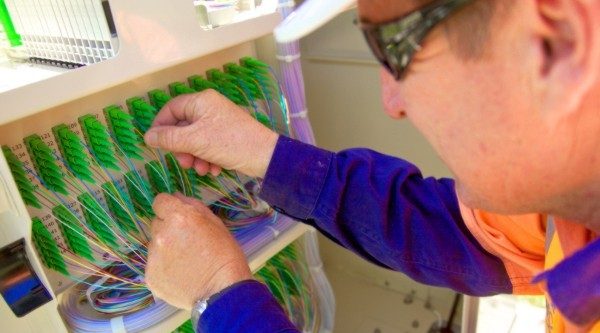
A flurry of information revealed ahead of a Four Corners report into Australia’s National Broadband Network (NBN) has shone a spotlight on the network’s profitability and high installation costs for direct fibre services, leaving experts worried about the potential impact on SMEs.
In an interview with the Four Corners program, NBN Co chief executive Bill Morrow revealed he believes the nationwide highspeed internet network will struggle to turn a profit due to it turning a loss on each new connection it makes.
“We collect about $43 per month from retail service providers for each home they sell into. In order to recover costs we need $52,” Morrow has told Four Corners.
The historically troubled NBN Co also unveiled the alarmingly high costs of fibre to the premises (FTTP) connections in the early stages of the network’s rollout, with a connection to a Tasmanian bowls club costing the company more than $86,000, due to its remote location and a requirement for “substantial civil work”.
These significant costs have meant NBN Co has begun a trial of switching to the significantly cheaper alternative of fibre to the curb (FTTC), with the company stating the average cost for an FTTC connection is $2900, compared to $4400 for FTTP. Fibre to the curb relies on a fibre connection to a distribution point, which then sends the signal down already existing copper wires to the home or business.
“Our huge country makes deploying the nbn network extraordinarily complex so having flexibility in terms of the technology we deploy in the field is incredibly important,” Morrow said in a statement.
But this switch has worried some who say a switch to FTTC will result in slower connection speeds for homes and businesses. Morrow himself has conceded that FTTP is a technologically superior connection, reports the ABC, but questions if Australian homes and businesses “really need it”.
“Fibre medium is better than copper medium. You can’t argue any other way, but do we need that fibre today? We know it costs more. Is it worth it to us to spend that money when we don’t really need it, and copper would suffice?” Morrow told the ABC.
“I think this is the policy that we’re operating under today that proves that — based on what consumers are expecting — copper is sufficient.”
Will the NBN ever be “business grade”?
Speaking to SmartCompany, founder of IT services firm Combo, David Markus, says he’s heard a number of “horror stories” from business clients and other associates about the NBN about whether the service is fit for their needs.
“We hear it all the time, we see businesses who’ve got it but find it doesn’t serve their purpose. It’s usually slower than business grade fibre,” Markus says.
“Businesses’ experiences vary from great to terrible, but when it’s your primary communication tool, you can’t have that variance.”
Markus believes a widespread switch from FTTP to FTTC might not have much of an effect on SMEs in the short term, but says that “five to ten years down the track”, businesses could start to feel the impact.
“If we step forward five or ten years, then the FTTC tech will be insufficient, and businesses will have to pay to get it upgraded. Why not just put it in now?” he says.
However, in the short term, Markus says SME’s attention should be on their ISPs and their service’s contention ratios, as this can have a much more noticeable impact on internet speed.
The contention ratio for a line is the number of other users who could be using the line at the same time as you, with Markus saying the old-style ADSL2 lines could have contention ratios around 20-to-1, meaning there were 20 other potential connections using the same line.
With business-level non-NBN fibre offerings, Markus says contention ratios are usually four-to-one, but says any business relying on its internet connection to have consistent speed should really be looking for a one to one ratio.
Recent reports from finder.com.au suggest the contention ratio for NBN services sits at about 31-to-1.
Markus believes this is fine for an everyday domestic user, but isn’t acceptable for businesses, and questions if the NBN ever cater to the needs of businesses.
“The question is, does the NBN intend to be a business grade service? I think it should, businesses are paying enough in taxes and connection fees to make it worth it,” he says.
“What’s being rolled out now is truly a domestic service.”
Had your own NBN “horror story”? Let us know in the comments below or email news@smartcompany.com.au.
Never miss a story: sign up to SmartCompany’s free daily newsletter and find our best stories on Twitter, Facebook, LinkedIn and Instagram.


COMMENTS
SmartCompany is committed to hosting lively discussions. Help us keep the conversation useful, interesting and welcoming. We aim to publish comments quickly in the interest of promoting robust conversation, but we’re a small team and we deploy filters to protect against legal risk. Occasionally your comment may be held up while it is being reviewed, but we’re working as fast as we can to keep the conversation rolling.
The SmartCompany comment section is members-only content. Please subscribe to leave a comment.
The SmartCompany comment section is members-only content. Please login to leave a comment.